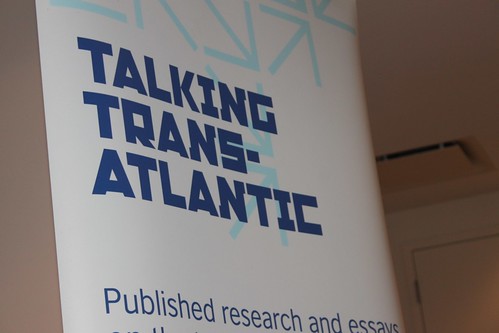Tracking the TN2020

I’m in Chicago this week with the British Council for the 2010 Summit of the Transatlantic Network 2020 (TN2020). It’s a group of just over one hundred people from twenty four countries, who have been selected from a huge range of backgrounds. In theory at least, these are some of the people expected to be in especially influential positions in one decade from now. By connecting them and inspiring them to collaborate, the project hopes to make a difference. I’ll be the Master of Ceremonies for the week, and I’m already enjoying meeting the members. Although the over-arching theme of the week is the power for technology to drive social change, we are exploring a range of topics in depth.
For our first two days, the group is splitting into five tracks on themes ranging from the role of water in the 21st Century to sustainable buildings and urban planning. I’ve spent this morning with the team from CeaseFire based here in Chicago, thinking about innovative solutions to violence prevention.
Some sobering statistics for you…
• In the state of Ilinois, 76% of offenders detained in 2003 were re-arrested by 2006.
• 17,875 children in the state are in foster care. The average stay is a depressing 50 months.
• 2/3 of inmates have children.
• Black youths are five times more likely to be killed than their white peers.
• In Chicago in 2008, 510 people were killed.
• In one particular Chicago neighbourhood (Englewood) it is estimated that 60% of the residents have mental health needs.
Here are four things that this morning’s conversations (whether or not covered explicitly) have made me consider;
1) The role for business: There is an increasing opportunity for the private sector to invest in social outcomes. This is being explored in the UK through the Social Impact Bond. If an organisation can prove that they are able to reduce re-offender levels by a certain amount, then this saves the country money, so why should that organisation not be rewarded accordingly?
Business must shoulder some of the blame for the glamorisation of violence and so it has a responsibility to be involved in problem solving. Perhaps one opportunity could link with the time is takes to build trust on a grass-roots level when working with young people. Brands are trusted by millions and there ought to be opportunities to leverage that trust (be the brands in sport, music or otherwise) to unlock engagement earlier than could be achieved otherwise.
2) Channelling style and energy: If a young person is showing high levels of style and energy, it is almost impossible to imagine them agreeing to sit and do nothing as the alternative. Instead, we have to think of other ways to channel that energy. This could be into entrepreneurship (and let’s face it, criminals and entrepreneurs must share many of the same traits). It could be through sport and other physical activities. Once again, I’m reminded of the potential for brands to invest in the provision of local resources, be they music studios, or sports equipment.
3) Mapping of social networks: We heard this morning that 55% of crimes committed by young people in Chicago are by 8% of that youth population. At a time when governments around the world (and particularly in the US and UK) are awaking to the potential for harnessing date, we were warned that in the area of violence prevention, this is not as simple as mapping potholes. Having said this, I wonder what work has been done in the mapping of social capital within communities. Isn’t it valuable to know who knows who, and who the influencers are within a particular community? Is this an invasion of privacy? Having identified the influencers within a community of young people, what forms of engagement would be valuable to spread a message of non-violence?
4) The need for school to change: Youth violence is often driven by a sense of hopelessness in young people. They are not being taught the skills they need to solve problems. Whilst they are busy learning facts and figures in school, techniques around conflict resolution go ignored. When it comes to paying attention to young people, we miss the opportunity to get involved, be that in counselling or just in listening or taking an interest, at an early stage. At the risk of veering into the touchy-feely, I wonder if we are being radical enough when it comes to the introduction of techniques for relaxation and stress-relief. Could activities to encourage meditation, reflection and thoughtfulness be developed at a greater pace? I’m sure that experiments are taking place all over the world along these lines. How can we learn which ones work?
I leave this morning feeling pretty uncomfortable about a number of things. The extent to which we celebrate violence in the media is worrying and showing no signs of abating. It is impossible to sit in a session like this without being reminded of America’s love of guns. It will be a brave politician who speaks up for the need to radically rethink the purpose and shape of schooling in the US or any other country. I am concerned by the idea that ‘the state’ should be left to solve these problems alone.
On a positive note, I am inspired to think about how people share ‘what works’ across cities, regions and international boundaries and how we cross pollinate techniques across sectors and generations. In a nutshell, this is the hope of the TN2020. It will be interesting to see what today’s session provokes.